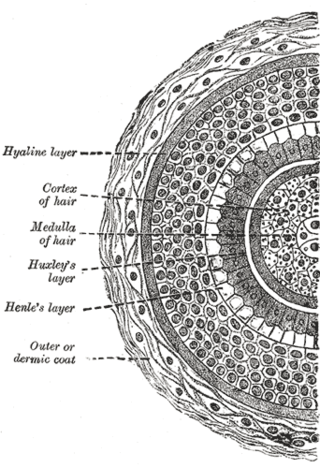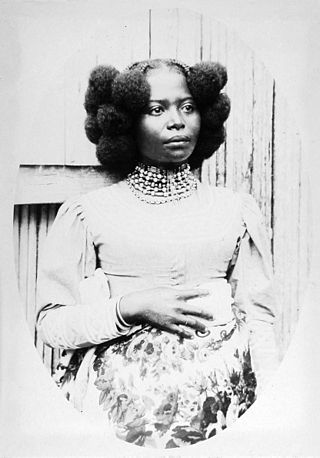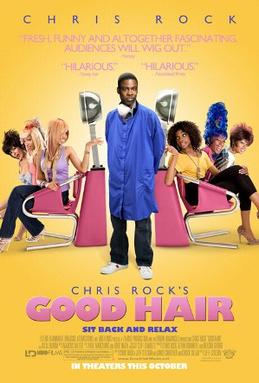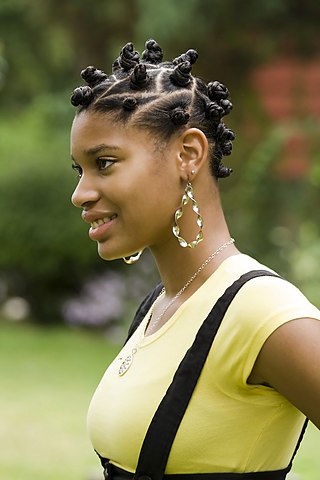Related Research Articles
Black is a racialized classification of people, usually a political and skin color-based category for specific populations with a mid to dark brown complexion. Not all people considered "black" have dark skin; in certain countries, often in socially based systems of racial classification in the Western world, the term "black" is used to describe persons who are perceived as dark-skinned compared to other populations. It is most commonly used for people of sub-Saharan African ancestry and the indigenous peoples of Oceania, though it has been applied in many contexts to other groups, and is no indicator of any close ancestral relationship whatsoever. Indigenous African societies do not use the term black as a racial identity outside of influences brought by Western cultures. Following the murder of George Floyd in 2020, several style guides, including the AP Stylebook, changed their guides to capitalize the "b" in black in 2020. The ASA Style Guide says that the "b" should not be capitalized. Some perceive the term "black" as a derogatory, outdated, reductive or otherwise unrepresentative label, and as a result neither use nor define it, especially in African countries with little to no history of colonial racial segregation.

Hair is a protein filament that grows from follicles found in the dermis. Hair is one of the defining characteristics of mammals. The human body, apart from areas of glabrous skin, is covered in follicles which produce thick terminal and fine vellus hair. Most common interest in hair is focused on hair growth, hair types, and hair care, but hair is also an important biomaterial primarily composed of protein, notably alpha-keratin.

The afro is a hair style created by combing out natural growth of afro-textured hair, or specifically styled with chemical curling products by individuals with naturally curly or straight hair. The hairstyle can be created by combing the hair away from the scalp, dispersing a distinctive curl pattern, and forming the hair into a rounded shape, much like a cloud or puff ball.

Carolivia Herron is an American writer of children's and adult literature, and a scholar of African-American Judaica.
Black is beautiful is a cultural movement that was started in the United States in the 1960s by African Americans. It later spread beyond the United States, most prominently in the writings of the Black Consciousness Movement of Steve Biko in South Africa. Black is beautiful got its roots from the Négritude movement of the 1930s. Negritude argued for the importance of a Pan-African racial identity among people of African descent worldwide.
Negrophobia is characterized by a fear, hatred or extreme aversion to Black people and Cape Coloureds or Coloureds, and Black culture worldwide. Caused amongst other factors by racism and traumatic events and circumstances, symptoms of this phobia include but are not limited to the attribution of negative characteristics to Black and Coloured people, the fear or the strong dislike of Black and Coloured men and the objectification of Black and Coloured women.

Afro-textured hair is a human hair texture originally prevalent in many regions with hot climates, including in sub-Saharan Africa. Each strand of this hair type grows in a tiny, angle-like helix shape. The overall effect is such that, contrasted with straight hair, wavy hair, or curly hair, afro-textured hair appears denser.

Good Hair is a 2009 American documentary film directed by Jeff Stilson and produced by Chris Rock Productions and HBO Films, starring and narrated by comedian Chris Rock. Premiering at the Sundance Film Festival on January 18, 2009, Good Hair had a limited release to theaters in the United States by Roadside Attractions on October 9, 2009, and opened across the country on October 23.
My Nappy Roots: A Journey Through Black Hair-itage is a 2006 American documentary film directed by Regina Kimbell.

African-American hair or Black hair refers to Afro-textured hair types, textures, and styles that are linked to African-American culture, often drawing inspiration from African hair culture. It plays a major role in the identity and politics of Black culture in the United States and across the diaspora. African-American hair often has a kinky hairy texture, appearing tightly coiled and packed. Black hair has a complex history, culture, and cultural impact, including its relationship with racism.

The Jheri curl is a permanent wave hairstyle that was popular among African Americans during the 1980s and early 1990s. Invented by the hairdresser Jheri Redding, the Jheri curl gives the wearer a glossy, loosely curled look. It was touted as a "wash and wear" style that was easier to care for than the other popular chemical treatment of the day, the relaxer.
Discrimination based on hair texture, also known as texturism, is a form of social injustice, where afro-textured hair or coarse hair types are viewed negatively, often perceived as "unprofessional", "unattractive", or "unclean".

Pardos is a term used in the former Portuguese and Spanish colonies in the Americas to refer to the triracial descendants of Southern Europeans, Indigenous Americans and West Africans. In some places they were defined as neither exclusively mestizo, nor mulatto, nor zambo. In colonial Mexico, pardo "became virtually synonymous with mulatto, thereby losing much of its Indigenous referencing". In the eighteenth century, pardo might have been the preferred label for blackness. Unlike negro, pardo had no association with slavery. Casta paintings from eighteenth-century Mexico use the label negro, never pardo, to identify Africans paired with Spaniards.
The natural hair movement is a movement which aims to encourage people of African descent to embrace their natural, afro-textured hair. It originated in the United States during the 1960s, and resurged in popularity in the 2000s.

The Curly Girl Method is an approach to hair care designed by author Lorraine Massey for natural hair that has not been chemically relaxed. This method discourages the daily use of sulfate shampoo, which is considered too harsh for curly hair. Among other things, it calls for the use of a cleansing conditioner in place of shampoo, no silicones, the use of a diffuser when blowdrying, and no combs, brushes, or terrycloth towels. It also includes tips for using hair gel and other styling products. The aim in general is to treat naturally curly hair gently, minimizing damage to the hair cuticle; to keep it moisturized, since curly hair is more prone to dryness than straight hair; and, perhaps most significantly, to accentuate rather than interfere with the hair's natural curl pattern.

Nappily Ever After is a 2018 American romantic comedy film directed by Haifaa al-Mansour and written by Adam Brooks and Cee Marcellus. It is based on the novel of the same name by Trisha R. Thomas. The film stars Sanaa Lathan, Ernie Hudson, Lyriq Bent, Lynn Whitfield, Ricky Whittle, and Camille Guaty.

Harmonia Rosales is an Afro-Cuban American artist from Chicago.

Braids are a complex hairstyle formed by interlacing three or more strands of hair. Braiding has been used to style and ornament human and animal hair for thousands of years in various cultures around the world.
In the United States, discrimination based on hair texture is a form of social injustice that has been predominantly experienced by African Americans and predates the founding of the country.

A protective hairstyle is a hairstyle that keeps the hair tucked away for minimum manipulation from the weather. Both cold and hot weather can pose as a threat to healthy hair because they contain elements that can be harmful to it such as frigid air, humidity, and water damage from rain and snow. Protective styles can help to retain length and growth. They include braids, wigs, locks, and twists.Some of the benefits of wearing protective hairstyles include: minimizing tangles and knots, giving the hair a break from tugging, pulling, and combing, and reducing the amount of time spent styling the hair.
References
- ↑ "Why 'Nappy' Is Offensive". Common Dreams. Retrieved 2018-09-11.
- ↑ "Nappturality.com: It's Your Hair. It's Your Journey. Discover It. - for Colored Gurls". Archived from the original on 2014-09-12. Retrieved 2014-09-12.
- ↑ "A Place for Us".
- ↑ "6 Styles for Type 4 Natural Hair That DON'T Require Stretching". BGLH Marketplace. 2014-07-25. Retrieved 2018-09-11.